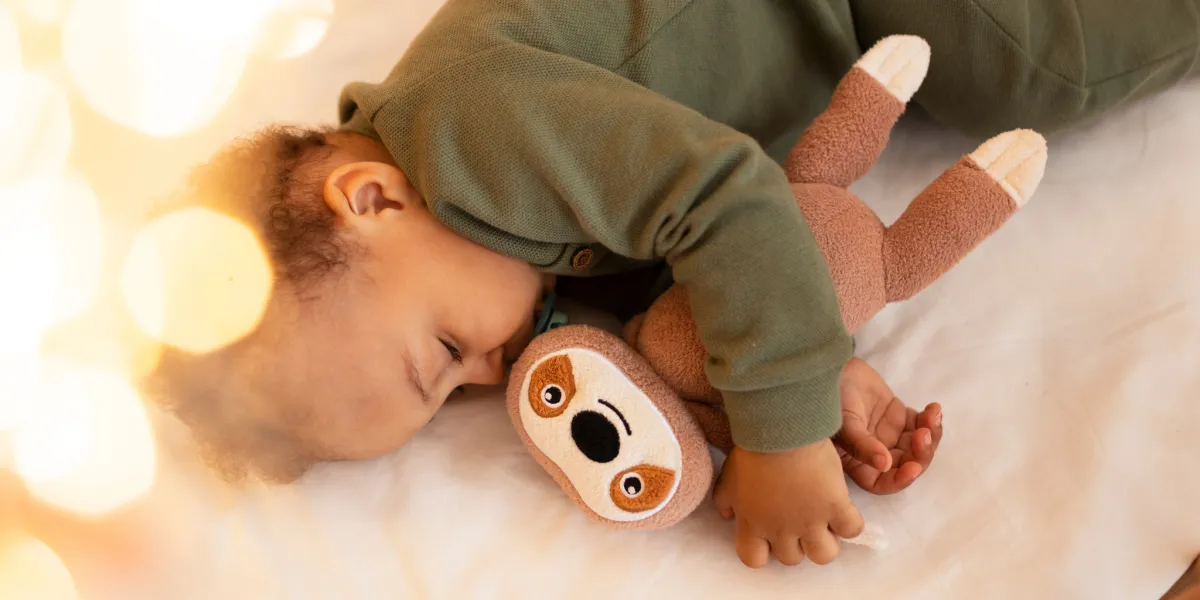
Myth vs. Medicine: Safe Sleep Practices to Reduce the Risk of SIDS
Myth: “If my baby wakes up at night or we occasionally share a bed, it’s acceptable.”
Medicine: Consistently following safe sleep guidelines—placing babies on their backs on a firm, separate sleep surface without soft bedding—is proven to reduce SIDS risk. Even in moments of fatigue, safe sleep practices must remain unchanged.
Safe Sleep Practices: What Every Parent Needs to Know
Of a truth, this is one of the hardest conversations I have with parents. No one wants to hear it. Sudden Infant Death Syndrome, or SIDS, is rare but real. As a pediatrician, I’ve seen families devastated by something that often has no clear cause or is, at times, preventable.
In 2022, the United States recorded about 3,700 sudden unexpected infant deaths (SUID), with 1,529 attributed to SIDS, according to the CDC. These aren’t just numbers—I have taken history from parents who lost a baby during sleep, babies who seemed perfectly healthy the day before. Dear readers, this isn’t to scare you. It’s to say: safe sleep matters a lot in newborns and infants, and there are simple steps you can take to lower the risk of SIDS.
What Is SIDS?
SIDS stands for Sudden Infant Death Syndrome. It refers to the unexplained death of a healthy baby under one year of age, usually during sleep. Most cases occur between 1 and 4 months. Its unpredictable nature emphasizes the importance of preventive measures.
What We Know Helps
The good news is that our understanding of safe sleep has improved tremendously over the past 20 years. Here’s what I recommend to every parent in my care—and what I practiced with my own children.
Back to Sleep, Every Time: Always place your baby on their back to sleep. This practice keeps the airway open and is the single most effective measure since the “Back to Sleep” campaign began in 1994. Even during naps, I insist on the back position—even when family members suggest otherwise.
Use a Firm, Flat Sleep Surface: Use a crib, bassinet, or play yard with a firm mattress and fitted sheet. No pillows, blankets, bumpers, or stuffed toys until at least one year of age. While it may seem sparse, it is vital for safety.
Room Share, Not Bed Share: Keep your baby in the same room—close to your bed—for at least the first 6 months (I kept my children for up to a year), but not in the same bed.
Avoid Overheating: Dress your baby in light clothing and keep the room temperature around 68–72°F. Consider using a sleep sack instead of blankets.
Don’t Rely on Devices: Baby monitors and breathing devices may give false security. Stick with proven safe sleep practices.
Offer a Pacifier: Pacifier use at nap time and bedtime has been shown to lower SIDS risk. If your baby refuses it, don’t force it.
Keep Baby Smoke-Free: Avoid any form of smoke exposure during pregnancy and after birth.
🔬 Myth vs. Medicine Spotlight: What Research Says
🧠 Scientific Insights on Safe Sleep Practices
Many parents sometimes believe that occasional deviations—like co-sleeping once in a while—are harmless. However, evidence underscores that consistent adherence to safe sleep guidelines is critical in reducing the risk of SIDS.
📚 Key Study #1
A 2022 study published in Pediatrics examined safe sleep behaviors and factors associated with adherence to safe sleep guidelines. The study found that less than 10% of infants consistently experienced all three recommended safe sleep conditions—supine positioning at both sleep onset and after awakenings, a firm separate sleep surface, and an absence of soft bedding—throughout the night. This research clearly suggests that even minor inconsistencies in sleep practices can increase risk factors for SIDS. The study emphasizes that tiredness and convenience should never override safe sleep protocols. For parents, this means that vigilance is key, even when it feels challenging at night.
Reference: doi: 10.1542/peds.2021-053935.
📖 Key Study #2
Another influential study, published in Pediatrics and supported by the American Academy of Pediatrics (AAP) guidelines, focused on the use of pacifiers during sleep. The research reviewed multiple studies and concluded that infants who use pacifiers at nap time and bedtime show a reduced risk of SIDS. Despite concerns regarding potential breastfeeding interference, evidence indicates that when introduced after breastfeeding is established, pacifiers do not negatively impact feeding patterns. Instead, pacifiers may help keep the airway open and promote safer sleep. This finding reinforces the recommendation for pacifier use as a simple, evidence-based strategy to enhance infant sleep safety.
Reference: doi:10.1542/peds.2016-2938.
🩺 Pediatrician Insight
As a pediatrician, public health researcher, and parent, I’ve seen firsthand the importance of consistent safe sleep practices. While it may be tempting to relax these practices when you’re exhausted, every instance matters. The research is clear: adhering to these guidelines can significantly reduce the risk of SIDS. It’s about creating a secure sleep environment consistently, even during those challenging nighttime hours. My experience with my own children and the families I work with has taught me that the smallest precautions—like ensuring a back-sleep only routine—can save lives. Remember, safe sleep isn’t optional; it’s a vital part of protecting our most vulnerable.
From My Home to Yours
With my second baby, we struggled a lot with putting her to bed. She would only settle if we rocked her first, and though the temptation was strong to co-sleep for convenience, we stuck to the safe sleep routine: crib, on her back, alone. Over time, she adapted, and our whole family began to sleep better.
You’re Not Alone
Sleep safety can feel overwhelming. Pressure from relatives, parental exhaustion, and conflicting advice add to the stress. If your baby is older than six months and still wakes every hour, or if bedtime becomes a daily meltdown, please talk to your pediatrician. Sometimes it’s simply a habit, but sometimes underlying issues like reflux or allergies exist.
I’m a pediatrician, yes—but I’m also a parent who’s walked the floors at 3 a.m. I’ve done the “rock, feed, repeat” cycle countless times. Sleep can improve, and you don’t have to figure it out alone. If you need help ensuring your baby sleeps safely, we’re here to guide and support you.
References
Bryan MA, Florence A, Gower AD, Evans YN, Moreno MA. Safe Sleep Behaviors and Factors Associated With Infant Second Sleep Practices. Pediatrics. 2022 Jun 1;149(6):e2021053935. doi: 10.1542/peds.2021-053935. PMID: 35634879
Hauck FR, Thompson JM, Tanabe KO, Moon RY, Vennemann MM; International SIDS Task Force. (2020). SIDS and Other Sleep-Related Infant Deaths: Updated 2016 Recommendations for a Safe Infant Sleeping Environment. Pediatrics. doi:10.1542/peds.2016-2938.
